Congrats and mad respect! Was reading some of the details in your comments in the other thread. A function generator is definitely on my want list, along with a CRT analyzer (if I happen to find a deal on a good one).
- 2 Posts
- 14 Comments

 6·1 month ago
6·1 month agoThe monitor had two obvious problems at first: yellow tint and rainbow patterning. Quick pass with a degaussing coil took care of the latter. Hooked up a composite lead and threw on my low-quality DVD-R copy of my VHS copy of my NTSC Reference Laserdisc and made some quick adjustments to the monitor; results below:

monoscope
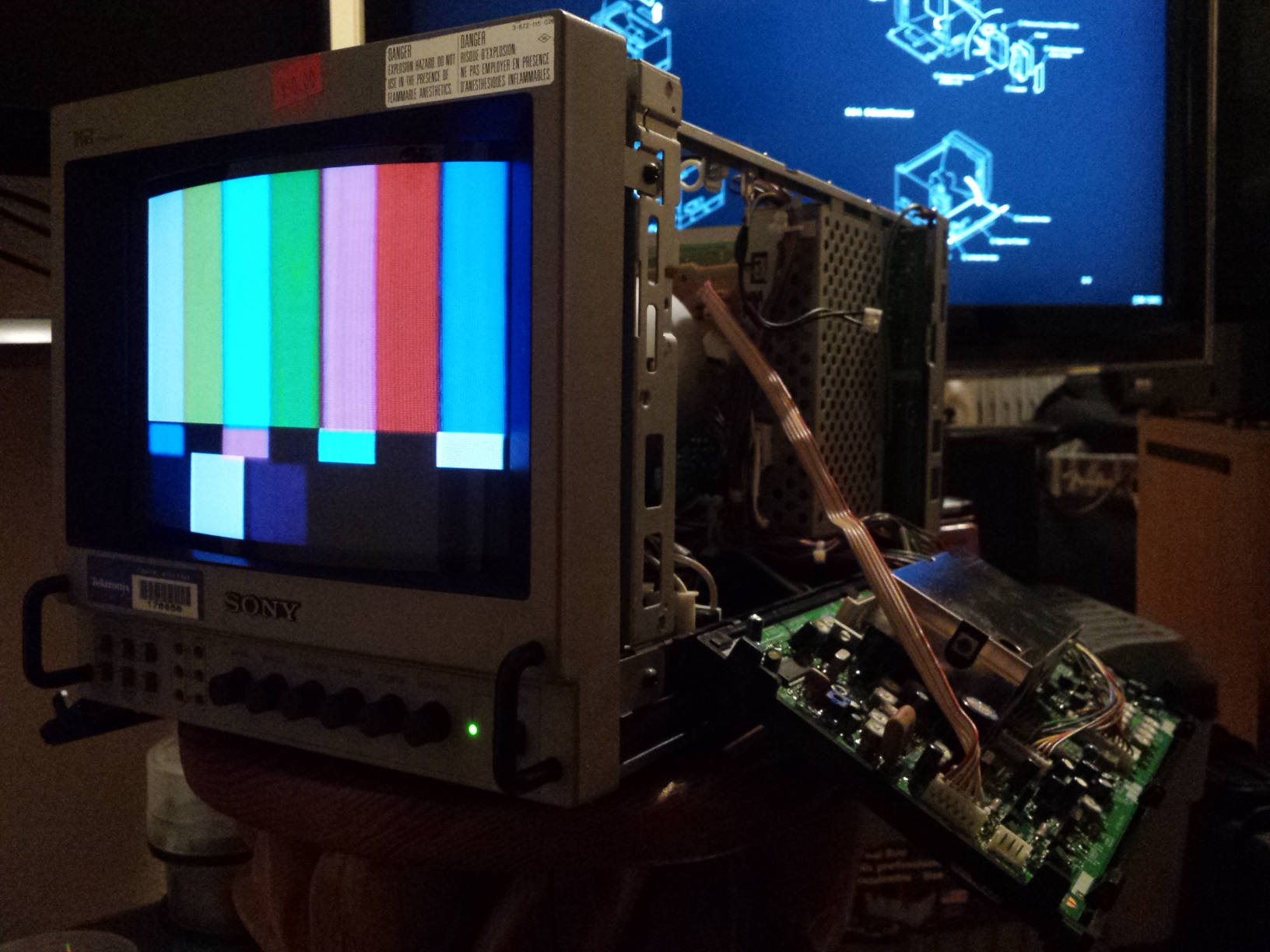
SMPTE bars
To make this post somewhat more relevant to the community:
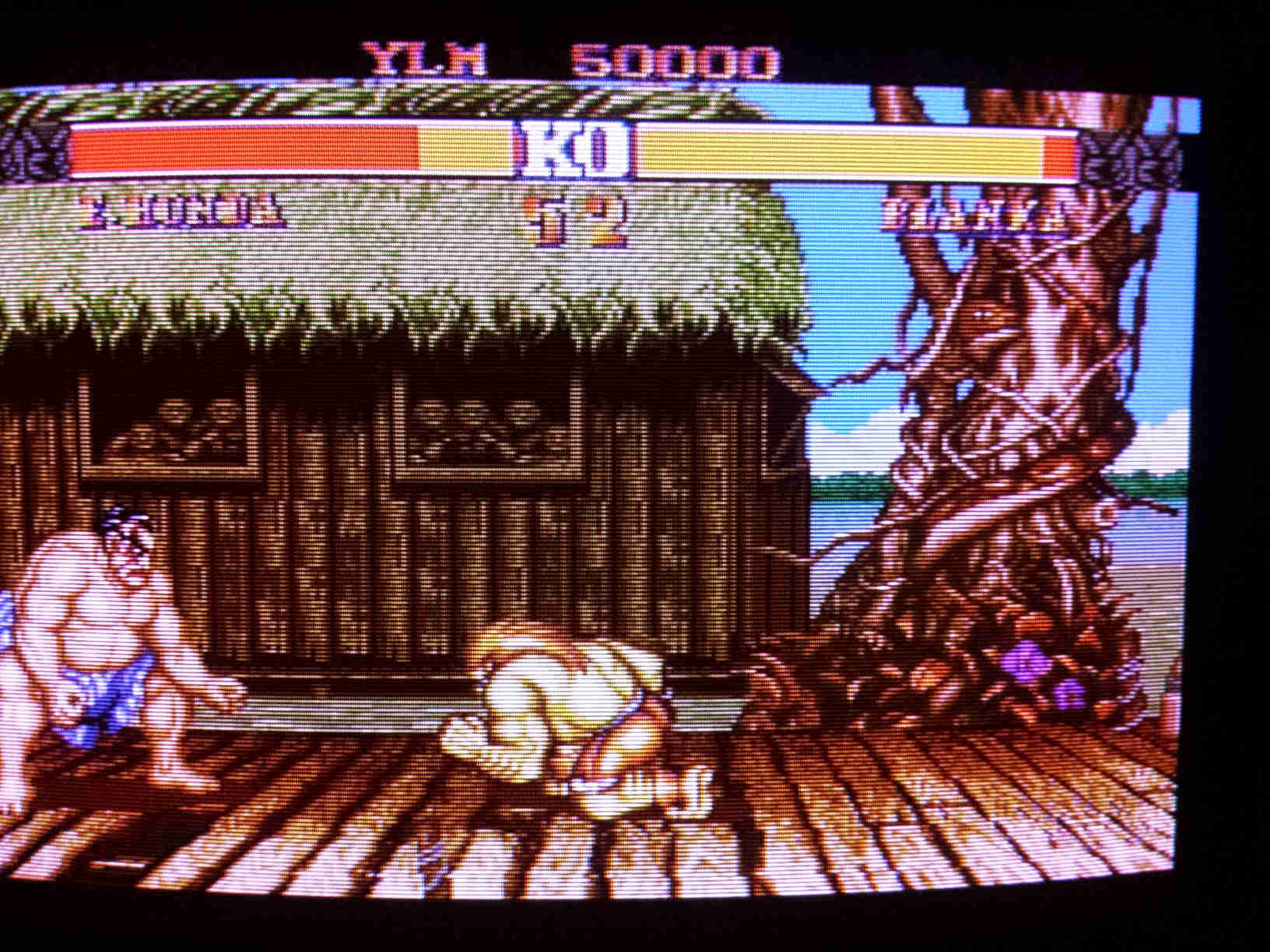
Street Fighter II (PC Engine) Blanka Stage
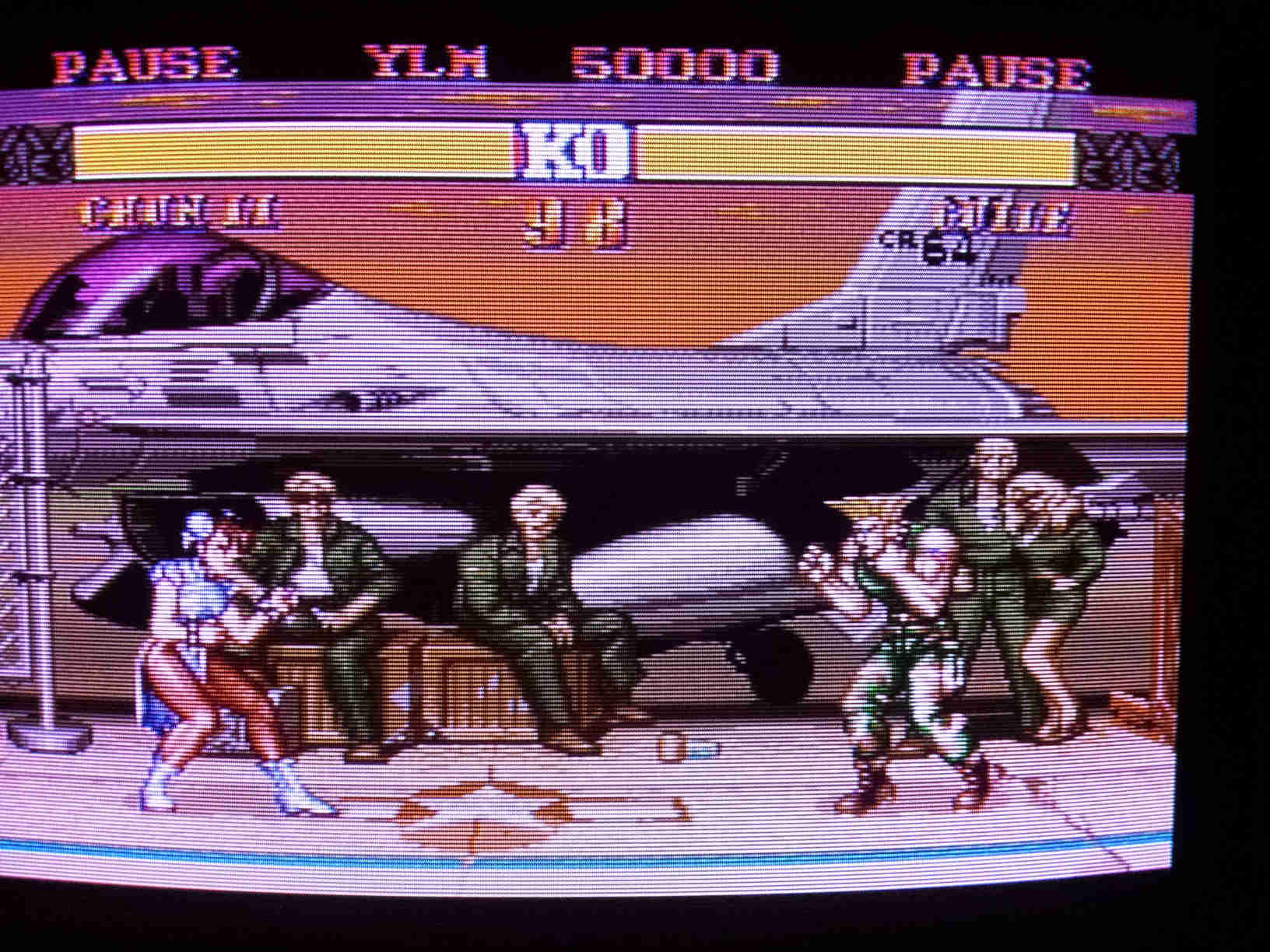
Street Fighter II (PC Engine) Guile Stage
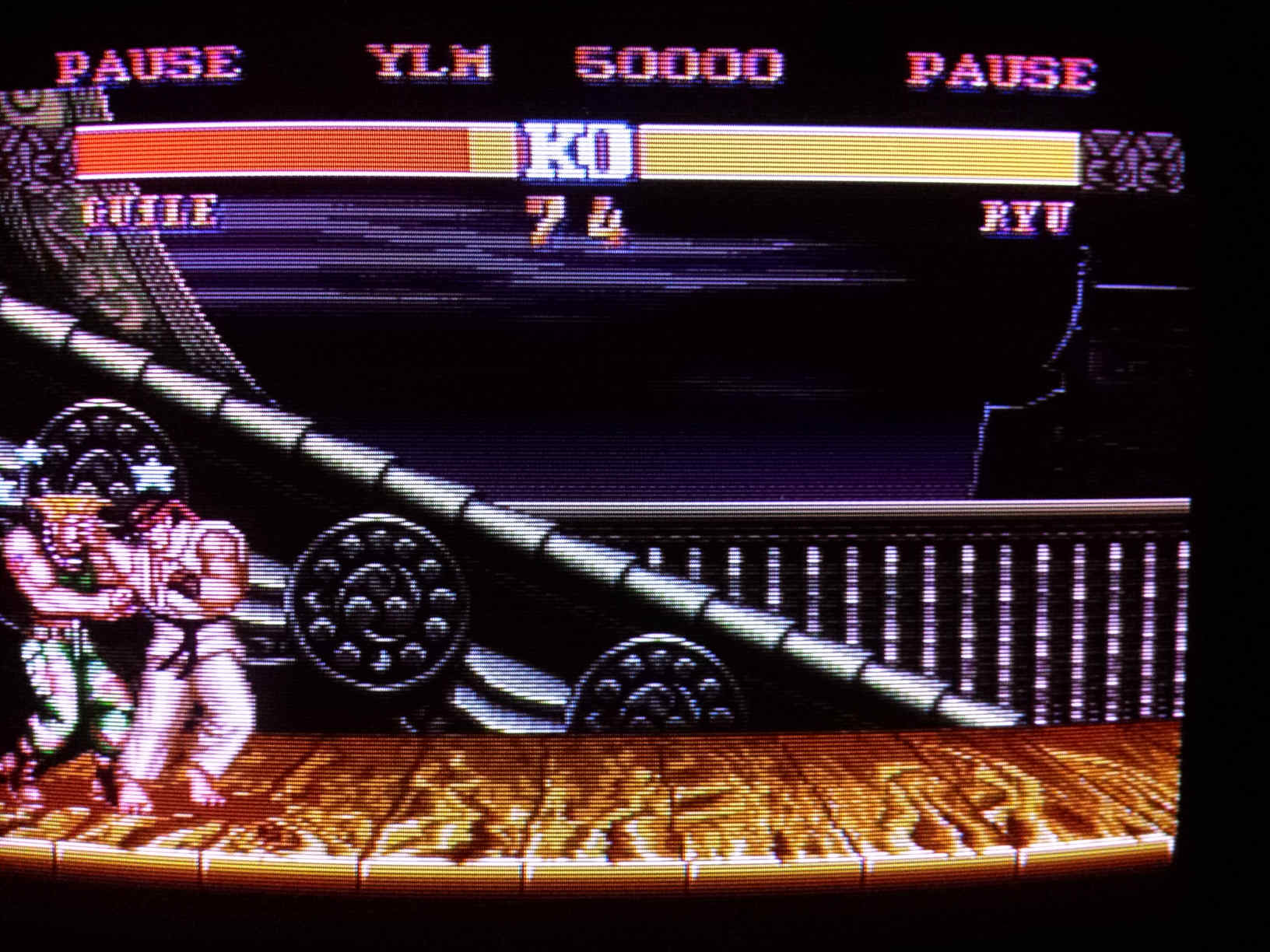
Street Fighter II (PC Engine) Ryu Stage
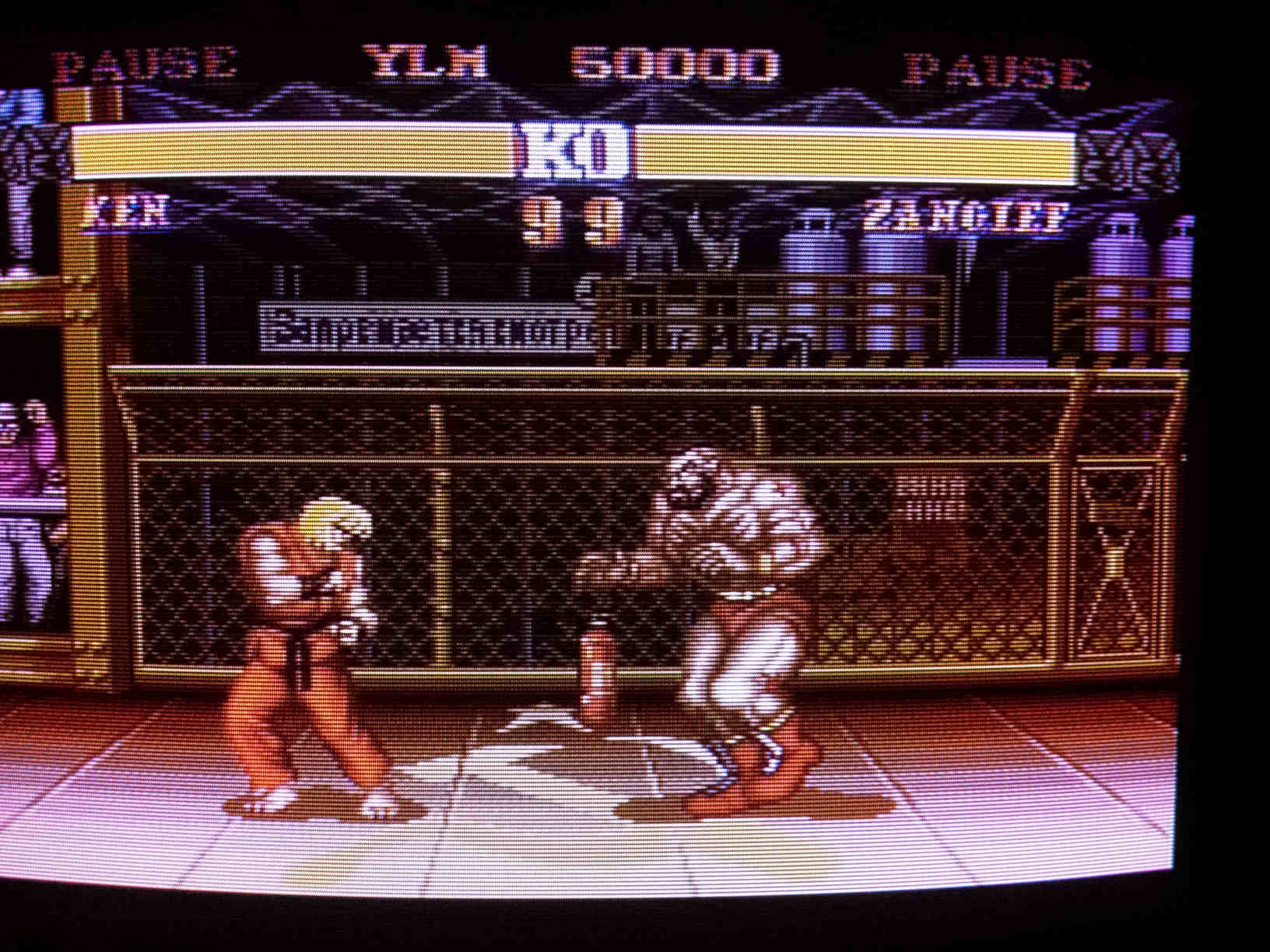
Street Fighter II (PC Engine) Zangief Stage
The colors in the game look different in these pictures; hard to make them accurate. But it looks good in person.(edit: better camera settings, more colorful game)Was reaching for my blue filter to set Color/Tint when I remembered this monitor has a “Blue Only” feature; pretty neat! Surprisingly, adjusting the Screen control on the flyback transformer seems to have more effect on the white balance than on the contrast. Still, had to maximize the Blue Gain control on the PCB and on the front panel to get the white balance close as possible for the time being. Heck, I might not actually bother with it much further; it looks pretty good. Will have to try the RGB inputs.

 16·1 month ago
16·1 month agoRight you are; this one’s a PVM-8043MD. Looks like it lacks the 16:9 mode, manual degauss and tally light. I believe MD signifies “medical”; removed the cover and there is some shielding around the deflection yoke.
Thank you for mentioning that model number. That page has some good troubleshooting info relevant to the white balance problem I’m seeing with this one. Will post something nice if I can fix it!

 5·3 months ago
5·3 months agoThought it was odd to call this a sequel to an “NES classic” considering Shadowgate originated on the Macintosh, but judging by the screenshots in the article it seems the authors indeed decided to implement an interface very similar to the one Kemco developed for their NES port. Interesting choice! Having played the Mac-like Amiga port and the NES port I do prefer the controls of the latter as they better suit the use of a keyboard or gamepad.
The music in the NES port is very memorable to me as well. If Beyond Shadowgate will feature sound, I would hope that cues are taken from the sound of the NES and the prior composer’s work.

 4·3 months ago
4·3 months agoI imported this game when it first came out and it’s been one of my favorites. Very interesting to think about how the strengths of the Genesis vs. the PC Engine could be used. So far it looks like it’s aimed at graphical fidelity. The PCE had a wider color palette from which to select and could display more colors simultaneously, but I don’t think Rondo really pushed those capabilities. Konami did some really nice parallax routines in this game for the single background graphics layer on the PCE. Those effects are much more common on the Genesis with its multiple hardware layers. Curious as to how the “extra power” could be used if werton opts to explore that. The FM cover tune sounds great, looking forward to hearing more!
What blew me away in the video was the costume change. Was that in the original all this time? I know what I’m playing today!

 7·3 months ago
7·3 months agoFun, spooky, action-oriented*, skeletons, bats: Temple of Apshai from 1983 on the Commodore 64. About two minutes fifteen seconds into the video you’ll see and hear its unique spooky atmosphere.
*for a role-playing game of this vintage, anyway.

 1·3 months ago
1·3 months agoWith you one hundred percent – Devil’s Crush features one of the best and longest tunes on the Turbografx-16!

 19·4 months ago
19·4 months agoWill probably check it out as I count myself among the Black Isle/Obsidian aficionados. Didn’t see a link to the mod in the article. Bit of a let-down that Yesterday does not seem to implement the 3D Jefferson Engine as was seen in the Van Buren tech demo, but props to these modders all the same!

 221·5 months ago
221·5 months agoThe article’s a good read. It’s not about the first game from 1987.

 2·5 months ago
2·5 months agoOne of the last of the many great shooters on the PC Engine is the one-or-two-player Ginga Fukei Densetsu Sapphire.

 7·6 months ago
7·6 months agoJust an old hobbyist here. Often I count myself lucky having grown up when a state-of-the-art home computer was a Commodore 64. Rightly or wrongly, I believe it’s quite possible for one human being to completely grasp what that machine is doing from the moment the power switch is turned on through to the end of running a complex self-written program. Not that it’s at the heart of your question(s) but that’s where my curiosity started. In those days any user had to know just a bit of the BASIC programming language, even if just to list the contents of a floppy disk or to load a pre-written program. I am always astounded at what people with much more dedication are able to do with a C64 to this day in the demoscene. The more generous among them make their discoveries digestible to mere mortals at sites such as codebase64.org. That’s a kind of comfort zone for me. Getting into something like a 386 PC and I start to feel overwhelmed. Maybe consider dipping back a bit into history if it sounds appealing?
As to semiconductor fabrication, I found this unconventional book by Clive Maxfield to be very helpful in clarifying some things I was curious about.
Some excellent stories from the heyday of MOS Technology in the first in this book series by Brian Bagnall. That’s the company that produced the popular 6502 family of 8-bit CPU that powered machines from Apple to Nintendo and many in between. Also where the custom chips were brought to life that formed the heart of the C64. One excerpt I often think back on were engineers laying flat on raised creepers, cutting the layout of their CPU-to-be out of huge sheets of vellum.
5 - Do we have to join Intel first or something to learn how most of the things work lol ?
May not be as far-fetched as you think. I’ve worked in Intel’s semiconductor factories, and Micron’s, and some others whose names aren’t widely known but whose products made things like the iPhone possible. Not cause I’m well-educated or have any particular talent, just that in a volatile marketplace such as this one there are ebbs and flows in demand for headcount in entry-level positions. Draft up a resume highlighting your critical thinking skills and willingness to learn and watch the recruiters from the staffing agencies fill your email inbox. I’ve had the good fortune to learn such processes as photolithography, thin-films, dry/wet etch, metrology, planarization, die sort (test), and on and on. Whether you’d like to operate the semiconductor tools, push the production metrics or maintain the equipment there just may be a need for you somewhere today.

 4·6 months ago
4·6 months agoThank you for the insight. Having little understanding of the purposes of CAPTCHA beyond what is implied by the acronym, I would be concerned if what seems implied in this comment thread were actually true. Clearly there’s a bit of tongue-in-cheek, but it seems reasonable to me as a layman that some implementations could produce data usable to train autonomous driving systems. I realize it’s possible there’s no simple answer to my original question, and wouldn’t be the first time I’ve overthought something.

 13·6 months ago
13·6 months agoecho "$((2#01010010)) $((2#01100101)) $((2#01100100)) $((2#01110010)) $((2#01110101)) $((2#01101101))"82 101 100 114 117 109Reads ‘Redrum’ in ASCII. A reference to The Shining, I suppose. If there’s a joke it’s lost on me, sorry. Was kinda fun spending 10min decoding that, though :)
Played the DOS version to completion, enjoying every bit of it. Then the TurboGrafx-16 CD version with its satisfying cinematic reveal of the big plot twist. Really wish I could play more games like this!